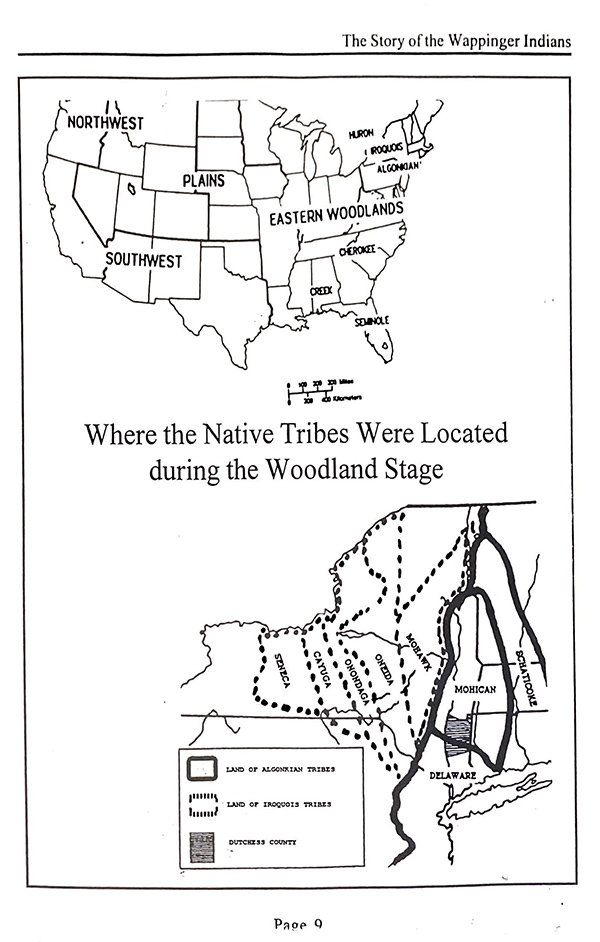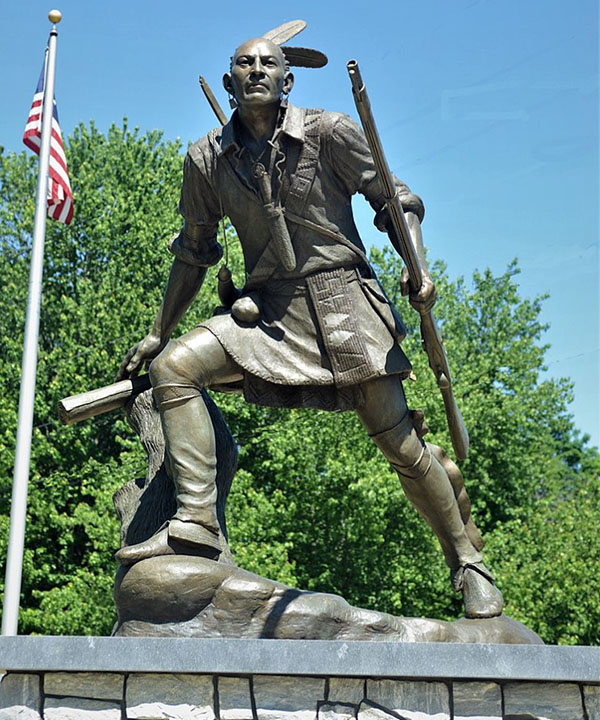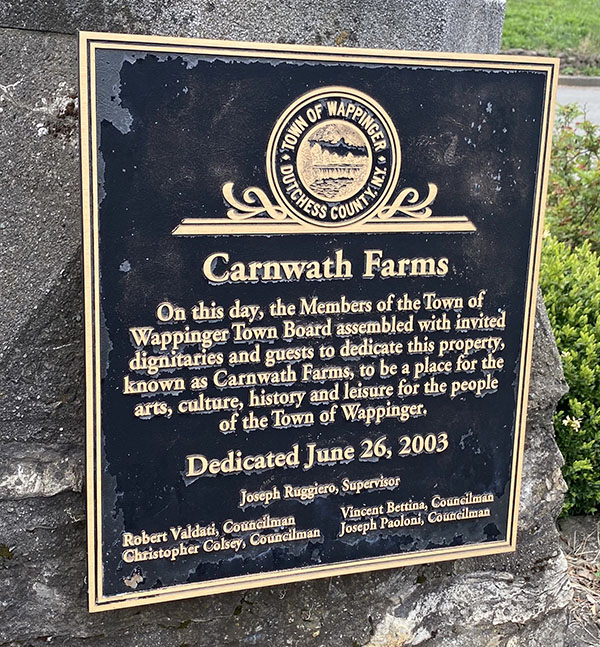
- This map above shows an approximation of where different native tribes habited overlayed with an existing map of Dutchess county. Here you can see that the Mohican lived from central to northern Dutchess and beyond and the Delaware lived in southern Dutchess and further south.
- -The Wappinger, a tribe of the Algonquin Language group, lived in the Eastern Woodland Area.[1]
- - Wappani, as they were called, translate to “man of the east,” they were part of the Lenape tribe, also known as the Delaware.[2]
- - The Mohicans,[3] another tribe of the Algonquin Language Group would come and live with the Wappani along the Wappingers Creek, known to the Wappani as Mawenawasic (Need translation).[4]
- For more information visit the Taylor Collection at Mesier Homestead. Native American Collection | Wappingers Historical Society | History
[1] Wappingers Central School District Local History Series, Native Culture in Our Country, The Story of the Wappinger Indians, 1993.
[2] Program at Wappingers Town Hall, November 10th 2022
[3] Native New Yorker, Evan T. Pritchard, page 226
[4] Program at Wappingers Town Hall, November 10th 2022
- - While we still know the Hudson River in his namesake, the Wappani called the river Muhheakantuck, “the river that flows both ways.”
- - At this point in time is it estimated Wappinger Confederacy Population was 13,500[1]
- - The Dutch claim the land along the Hudson River and call it New Netherlands.
- - 1643 – 1645 Kieft’ War also known as Wappinger War kills an estimated 1,600 Wappini.[2] The Dutch population increased from 2,000 in 1648 to 10,000 in 1660.
- - 1659-1664 - Esopus War
[1] History of Putnam County, New York : with biographical sketches of its prominent men : Pelletreau, William S. (William Smith), 1840-1918 : Free Download, Borrow, and Streaming : Internet Archive

[1] Wappingers Central School District Local History Series, Native Culture in Our Country, The Story of the Wappinger Indians, 1993.
- - The Rombout patent [1] was issued by King James II of England in 1685.
- - This patent gave Francis Rombout and his partners Stephanus Van Cortlandt and Jacobus Kip to own 85,000 acres of land that they had purchased from the Native Americans.
- - The original Rombout Patent still exists today and residents in the Madam Brett Homestead in Beacon, NY.
- - Legend has it that Rombout tricked the Wappingers leaders into selling more of the land than what they intended to.
- - A transcription of the patent and more can be found here
_____________________
[1] Cassidy, Henry, The Rombout Patent, DCHS-PUB-1985-The-Rombout-Patent.pdf (dchsny.org), 1985.
[2] Popper, Edgar A. The Birth and Growth of an Old Village, Wappingers Falls, New York, 1707-1977
- < 1,000
- < 300

- Daniel Nimham the last Sachem of the Wappini - Daniel Nimham | American Battlefield Trust (battlefields.org)
- The Willis Family Commissions the Construction of Mansion[1] The Manor gets it name from a Manor home in Scotland
__________________________
[1] The original manor and site layout were designed and built during Downing’s most active and influential era. Page 7 of the Carnwath Farms – Town of Wappinger – Master Plan
(needs reference)
– Barclay’s son-in-law (Francis Robert Rives) bought the estate.[1] Under their guise they name the estate Carnwath (link to more on why) and it became their primary residence. At this time the property is estimated to be 200+ acres (needs reference)
___________________
Carriage House and Ice House constructed.[1] Carnwath being operated as a “gentlemen’s farm” – employing over 100 farmhands
_______________________________

After Rives dies he leaves the estate to his son Reginald W. Rives.[1] Reginald W. Rives was locally a prominent figure, eventually becoming the Town Supervisor from 1900-1901.
________________________
– The administration building is constructed[1]
____________________________
[1] https://carnwathfarms.webs.com/history-of-carnwath-farms
- Carnwath and the broader Wheeler Hill Historic District, is added to the National Register of Historic Places, which is federally recognized[1]
__________________________
– Friends of Carnwath informally exists as “Friends of Greystone,” Carnwath Restoration Committee,” and “Friends of Carnwath Farms”

– “The preservation of the site' s significant open space was permanently cemented in the adoption of a Resolution by the Wappinger Town Board to grant a Conservation Easement between the Town of Wappinger and the Dutchess County Land Conservancy.”[1]
______________________
[1] Carnwath Farms – Town of Wappinger – Master Plan page 11-12
